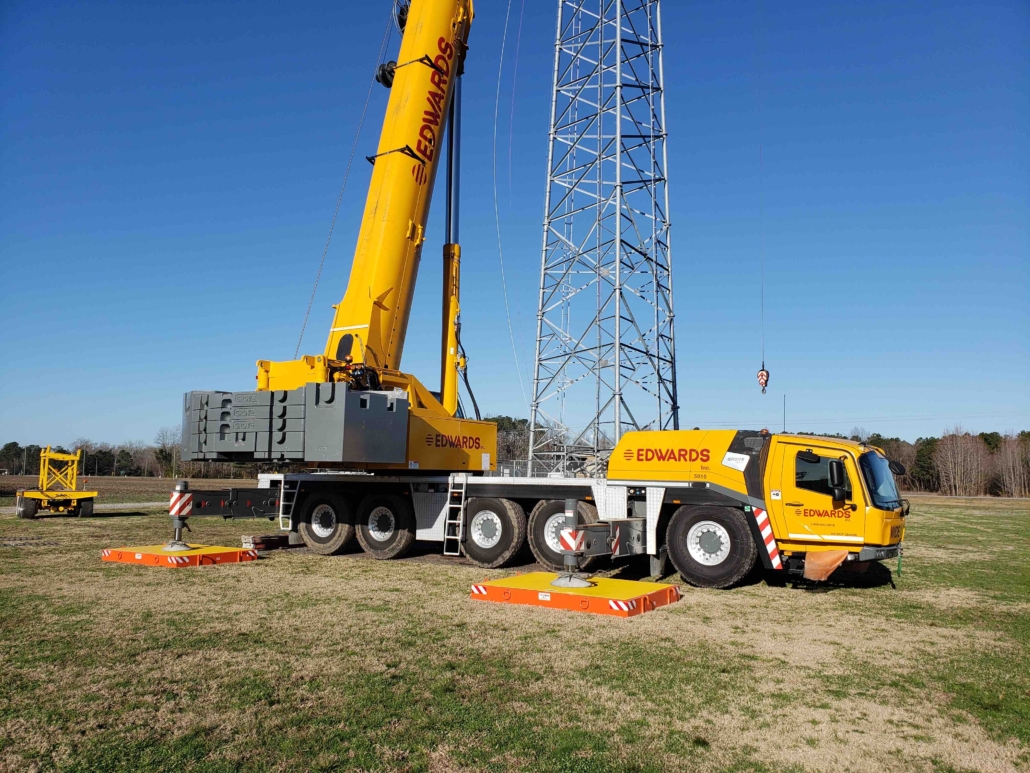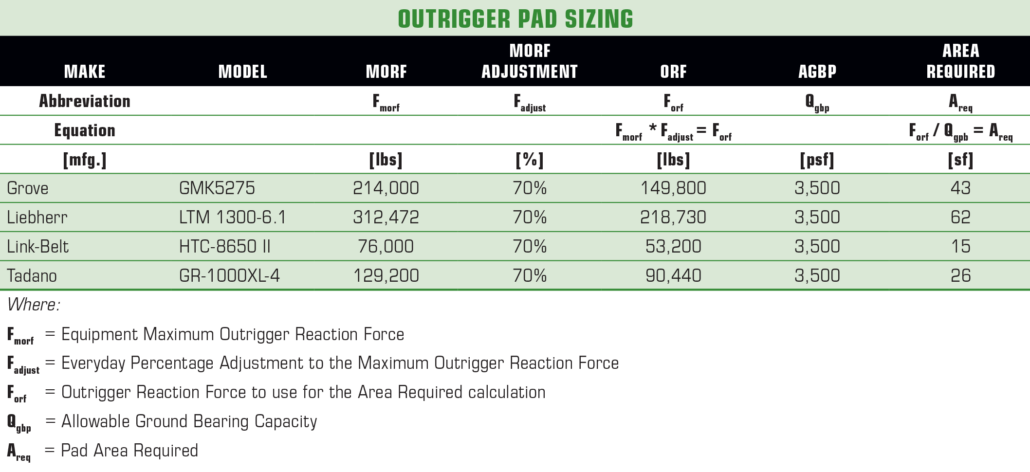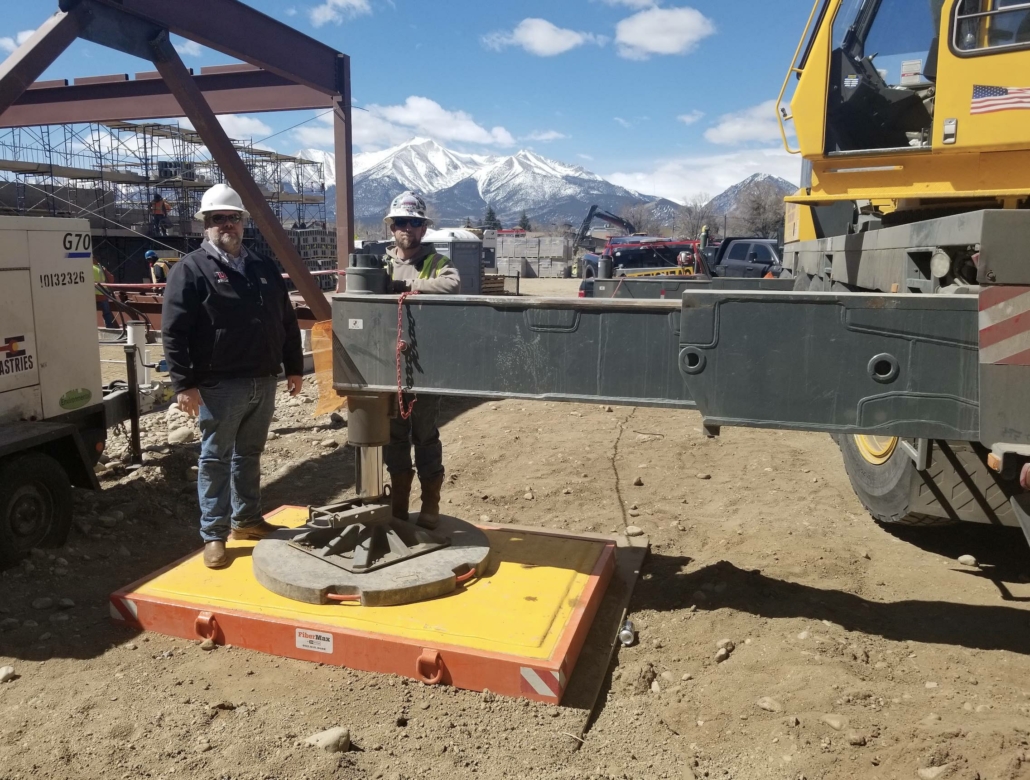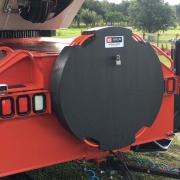AC&T Feature: Creating a Culture that uses Outrigger Pads Everyday
Reader Note: In this article featured in AC&T magazine, we use the term Crane or Outrigger Pad to describe supporting material used for load distribution under an outrigger. We are not using the term Crane Mat, which describes supporting materials used under crawler tracks.
There’s a growing interest among crane owners to establish standard operating procedures for using outrigger pads for “everyday” lifting scenarios. This involves an evaluation of your equipment and typical jobs to select the right size and type of crane and outrigger pad. Establishing a culture that incorporates this type of strategic planning mitigates risks, minimizes liability, and improves overall safety.
Data vs. Rules of Thumb
In the past, outrigger reaction forces (the loads applied from the outrigger float to the ground) were not readily available. This led to assumptions and the development of rules of thumb. Today, crane manufacturers provide this information, and it is very reliable. In many cases, crane manufacturers have built sophisticated online calculators that generate outrigger reaction forces for any crane condition within the specified chart.
Crane pad selection should be based on both the equipment loads and the planned or actual ability of the ground to support it. There are no rules of thumb that take both the equipment loads and the ground conditions into account. For these reasons, using rules of thumb for selecting crane pads should be viewed as potentially dangerous, and their use should be avoided.

Create clarity for customers and controlling entities. If the crane is outfitted with pads sized to reduce outrigger loads to a maximum allowable ground bearing pressure of X,XXX psf, this information can be included on every job quote and job ticket.
Data Driven Selection
Determining an “everyday” approach to selecting outrigger or crane pads is different from rules of thumb. It requires specific data inputs and should be done at the company level.
To determine the minimum pad area, you must know the Outrigger Reaction Force and the Allowable Ground Bearing Pressure. The Outrigger Reaction Force is the amount of loading a crane applies through an outrigger float (typically expressed as a unit of weight, such as lbs). The Maximum Outrigger Reaction Force is specified by the manufacturer. It is a critical data point. Allowable Ground Bearing Pressure is the maximum pressure allowed on the supporting surface (typically expressed in pressure units such as psi and psf). Finally, to calculate the minimum crane pad area, divide the Outrigger Reaction Force (ORF) by the Allowable Ground Bearing Pressure (AGBP); (ORF/ABGP = Pad Area).

Determining an “everyday” approach to selecting outrigger or crane pads is different from rules of thumb. It requires specific data inputs and should be done at the company level.
The next step is to determine what material, construction, assembly, or pad type to use. To do this, you will need to seek assistance from a qualified person, such as an engineer with knowledge and experience in crane pad design or a crane pad manufacturer. David Duerr PE, author of Mobile Crane Support Handbook has written an excellent book on this topic. Among other important information, the book provides guidance on the application of different methods for the design, analysis and use of traditional crane pads and mats.
If you are purchasing pads from a manufacturer, make sure the rated capacity of the pad exceeds the maximum outrigger reaction force of the crane. Doing so is a critical step in preventing physical failure during use. Next, make sure the products have adequate stiffness to resist bending (deflection) and to spread the load over the intended area to reduce ground bearing pressures to required levels.

Crane pad selection should be based on both the equipment loads and the planned or actual ability of the ground to support it.
Fleetwide Everyday Approach
Keith Anderson in his book Rigging Engineering Basics suggests that a “standardized” approach reduces complexity when selecting outrigger pads or crane pads. This ensures each piece of equipment in a company’s fleet stays within permissible ranges, as defined by their team. This approach has many benefits.
First, pad selection becomes a strategic decision based on criteria that is important to each company and the data inputs for the specific crane. Examples include critical lift criteria, typical allowable ground bearing pressure requirements, pad ergonomics, crane load out, and the like.
Second, an “everyday” approach allows companies to standardize crane pad usage guidelines and limitations. For example, a typical policy might include limiting non-engineered lifts to less than 75% of chart. If the lift falls outside the guidelines, then additional discussion or planning would be required. This gives operators clear boundaries and triggers procedures for when the lifting scenario exceeds the permissible ranges. That’s when the crane rental company would create a specific lift plan that may require a different outrigger pad type, size, and thickness than the assigned “everyday” pad.
A third, and newer concept, is to use this approach to create clarity for customers and controlling entities. For example, if every crane is outfitted with pads sized to reduce outrigger loads to a maximum allowable ground bearing pressure of X,XXX psf, then this information can be included on every job quote and job ticket. Current regulations and standards clearly establish that the controlling entity has responsibility for the ground. However, if your company has established procedures, the crane rental company can tell the controlling entity what your minimum Allowable Ground Bearing Pressure (AGBP) is.
Here are some other things to think about as it relates to reducing your risk. Ask your team: At what point do you compare the controlling entity’s maximum allowable with your minimum expectation? In the event of an incident related to ground conditions, the controlling entity may have provided AGBP, and you may not have exceeded it. However, do you have documentation stating what your minimum AGBP is? Without this documentation, insurance claims and legal battles can become significantly more complicated and costly. Implementing a standardized, “everyday” sizing approach and documentation can potentially reduce risk and liability, positively impacting safety.



